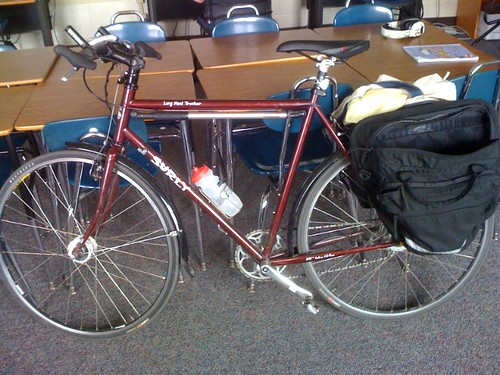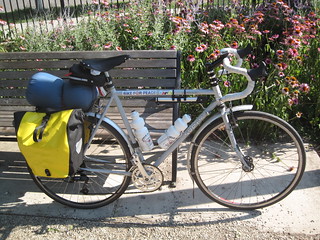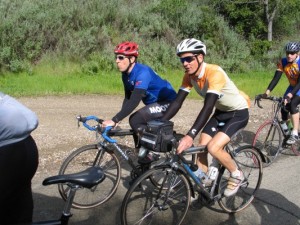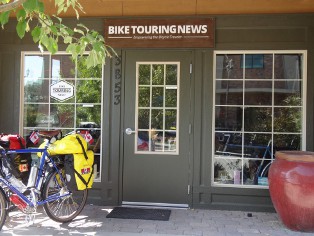There are three points where a person and a bicycle make contact when riding. The first two are the rear end on the saddle and the feet on the pedals. (OK, so there’s 4 if you count two feet). And you should read the first page in this series if you haven’t already. The handlebars are the last point to worry about. For efficient pedaling the saddle height and setback relative to the pedals will fall within a certain “best” range for each individual. Things get a little blurred when it comes to handlebars and bike fit and touring, mostly because there are so many different shapes of handlebars and every bike tourer will have a preference.
Flat handlebars are typically sold as original on mountain bikes and hybrid bikes, but can be used on a touring bike as shown above.
Drop handlebars are associated with road bikes and most touring bikes.
http://www.flickr.com/photos/bethness/3681295445/
Swept back bars such as the Albatross shown above allow for an up-right riding position.
When I owned the bike shop some people told me they would never ride a bike with drop/road handlebars because they didn’t want to ride in a position with a lot of weight on their hands and/or a position that makes them strain their neck just to see where they are going. I suggest that with the right bike and the right adjustments a drop bar can be very comfortable, partly because there are so many hand positions a person can ride in. Every time you change hand positions it will also stretch and work different muscles in your back and arms and legs reducing fatigue.
Most bikes sold as touring bikes will come with drop bars. That doesn’t mean you have to use them, although there is some expense involved in changing them to a different style.
In the last installment I’ll try to put all of these ramblings into some sort of understandable approach to figuring out what size touring bike will work best for a given person, and how that bike can be set up and adjusted.




Recent Comments